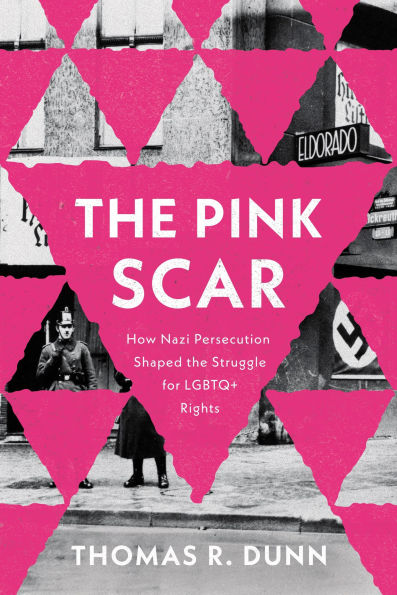Today, prevailing historical narratives hold that the persecution of homosexuals under Hitler was “discovered” in the 1970s by a post-Stonewall gay and lesbian community, who were the first to use these tragic events—emblematically symbolized by the pink triangle—to advance the struggle for LGBTQ+ rights around the world. The Pink Scar tells a different story. This book shows that Americans had ample opportunity to learn about this persecution before and during the war and explores how activists in the United States made Hitler’s anti-homosexual campaign a central, animating force in their arguments at almost every major turning point in the lesbian and gay struggle since 1934.
Victims of the Nazi regime were among the most important and the most contested symbols in the history of lesbian and gay rights rhetoric—perhaps even more contested than the pink triangle itself. This book shows us how, nearly one hundred years after Hitler came to power, remembering the people persecuted by the Nazi regime is once again essential for defending LGBTQ+ rights in a new age of growing fascism and anti-queer/trans oppression.
Today, prevailing historical narratives hold that the persecution of homosexuals under Hitler was “discovered” in the 1970s by a post-Stonewall gay and lesbian community, who were the first to use these tragic events—emblematically symbolized by the pink triangle—to advance the struggle for LGBTQ+ rights around the world. The Pink Scar tells a different story. This book shows that Americans had ample opportunity to learn about this persecution before and during the war and explores how activists in the United States made Hitler’s anti-homosexual campaign a central, animating force in their arguments at almost every major turning point in the lesbian and gay struggle since 1934.
Victims of the Nazi regime were among the most important and the most contested symbols in the history of lesbian and gay rights rhetoric—perhaps even more contested than the pink triangle itself. This book shows us how, nearly one hundred years after Hitler came to power, remembering the people persecuted by the Nazi regime is once again essential for defending LGBTQ+ rights in a new age of growing fascism and anti-queer/trans oppression.

The Pink Scar: How Nazi Persecution Shaped the Struggle for LGBTQ+ Rights
220
The Pink Scar: How Nazi Persecution Shaped the Struggle for LGBTQ+ Rights
220
Product Details
| ISBN-13: | 9780271100159 |
|---|---|
| Publisher: | Penn State University Press |
| Publication date: | 10/21/2025 |
| Series: | Troubling Democracy |
| Pages: | 220 |
| Product dimensions: | 6.00(w) x 9.00(h) x 0.85(d) |
